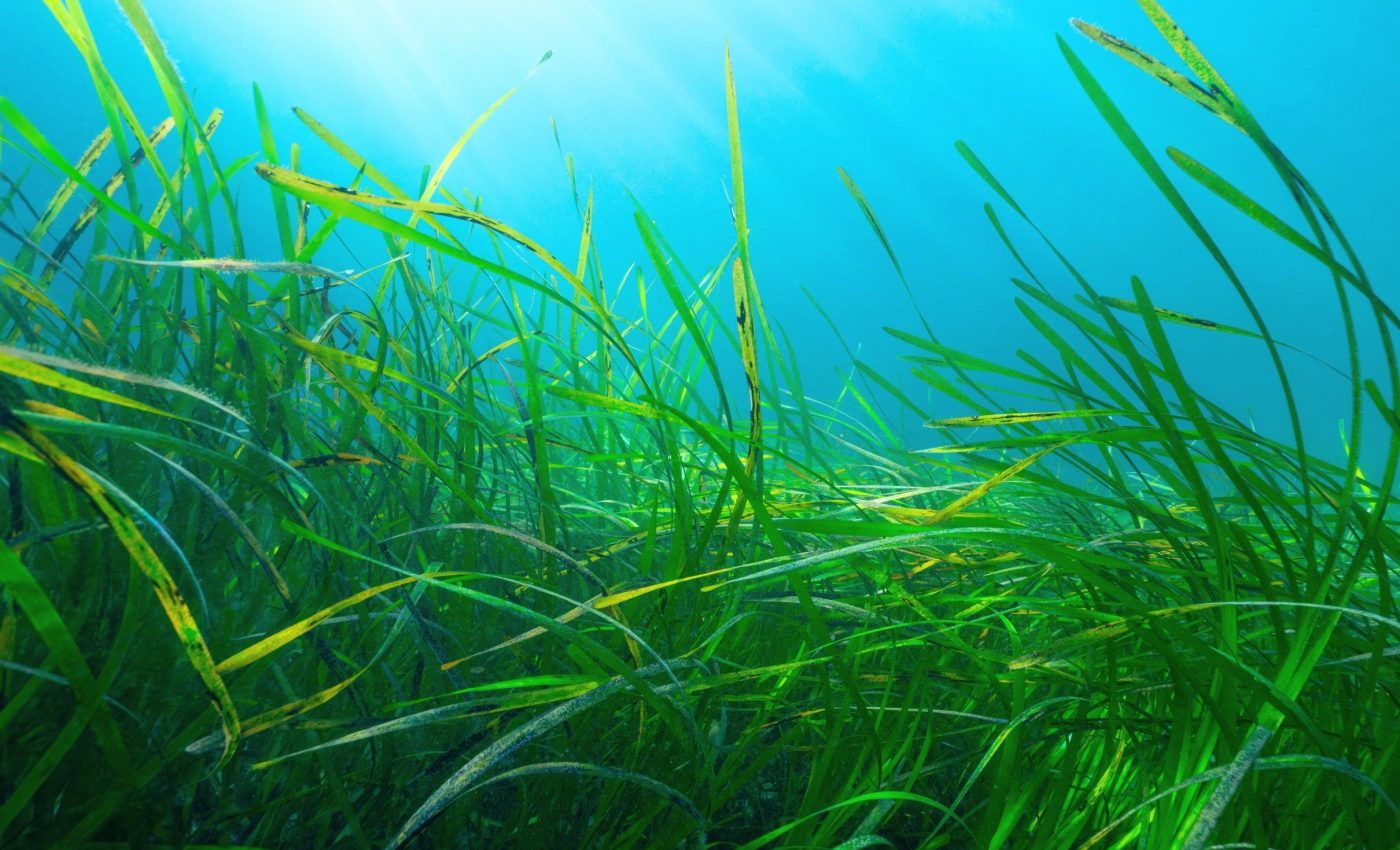
Seagrass meadows turn out to be massive living carbon banks
Seagrass meadows, the underwater forests that anchor coastlines and shelter marine life, are also major carbon banks. For the first time, scientists have tallied how much carbon these plants hold in their living tissue – and the number is striking.
The global total reaches up to about 44 million tons of carbon stored in seagrass leaves, rhizomes, and roots.
The new estimate spans meadows from the Mediterranean to the North Pacific and temperate Atlantic, offering a worldwide view of carbon locked in living biomass rather than long-buried soil.
The findings provide a long-missing baseline for how much living carbon seagrasses contribute to the planet’s blue carbon budget.
Measuring carbon in living seagrass
The work was led by Enric Gomis, a Ph.D. candidate at the Centre for Advanced Studies of Blanes within Spain’s National Research Council (CEAB). His research focuses on seagrass carbon and nature restoration.
Seagrass stores two kinds of carbon. One sits in living tissue above and below the seafloor, the other settles into the seabed and can persist for centuries as the meadow endures, a form of blue carbon, carbon captured and stored by coastal ecosystems.
The team counted only the living reservoir and then compared it with the rate at which plants add new mass each year. That annual rate is called net primary production – the net rate at which plants add new biomass.
On average, living biomass holds about 0.69 tons of carbon per acre. Each year, the plants fix about 3.0 tons per acre of new carbon in living tissue before any of it moves or decomposes.
Seagrass species store carbon differently
Some meadows are dominated by large, slow-growing species that persist for decades. Others are built by fast-cycling species that spread quickly but turn over faster.
Persistent meadows stockpile more carbon in their structure, especially in long-lived belowground parts. Opportunistic and colonizing meadows add new mass at a faster clip, which boosts their annual capture rate even if less stays in place long-term.
The balance also varies by sea. Mediterranean meadows usually hold more carbon in place, while North Pacific and temperate Atlantic meadows often show quicker yearly capture.
Different paths lead to the same climate service. One pathway prizes long storage, while the other emphasizes speed of uptake.
Counting carbon the right way
Climate programs already recognize coastal habitats in greenhouse gas reporting. The IPCC has issued detailed guidelines for accounting that include seagrass biomass when data allow.
Carbon markets are starting to follow. Verra’s tidal wetland and seagrass methodology sets rules for crediting projects that conserve or restore these habitats, and a carbon credit, a tradable unit of verified climate benefit, can be issued when requirements are met.
Getting biomass right matters because credits hinge on measured stocks, measured gains, and documented permanence.
The new dataset offers a common baseline that countries and projects can use when designing inventories and restoration plans.
There is also a caution. Methane and nitrous oxide fluxes can trim the apparent climate benefit of some sites, according to a recent analysis that synthesizes gas measurements and long-term burial rates.
Measuring meadows, mile by mile
Seagrass extends across at least 62,000 to 103,000 square miles of seafloor. That range reflects mapping gaps and uncertainty in several regions, as shown by global mapping.
The new analysis pulls together data across 66 countries and all major bioregions. It identifies clear differences tied to life-history and local conditions that affect both storage and growth.
In practice, that means the same acre can play very different roles depending on which species build the meadow and where it sits. Management should track those differences rather than assume a single number fits every coast.
The headline number still adds clarity. It captures the living carbon that had been missing from many inventories that focused mostly on soils.
The cost of losing seagrass
Despite their value, meadows are shrinking in many places due to coastal buildout, pollution, and hotter water.
Loss matters because living stocks are vulnerable once plants die back, and soil carbon can erode if roots no longer hold sediments.
The authors estimate that biomass loss from seagrasses releases about 170,000 to 282,000 tons of carbon dioxide equivalent each year. A gigagram – equal to one thousand metric tons of mass – helps explain the original reported figures in scientific units.
Avoiding loss often beats trying to buy it back later. Protecting intact meadows keeps living carbon steady and preserves the slower soil store that builds beneath them.
Saving meadows saves the climate
The conservation message here is practical. Countries can use these numbers to target hotspots where keeping meadows healthy will avoid the most emissions and sustain other benefits like fisheries and clear water.
“Conserving them not only preserves biodiversity but also avoids emissions and contributes to capturing carbon naturally,” said Gomis.
“What is new about this work is that, for the first time, we have a global balance of blue carbon in seagrass meadows,” said Òscar Serrano, CEAB CSIC researcher and coordinator of the study. That balance helps link science to policy without guesswork.
The study is published in the journal Nature Communications.
—–
Like what you read? Subscribe to our newsletter for engaging articles, exclusive content, and the latest updates.
Check us out on EarthSnap, a free app brought to you by Eric Ralls and Earth.com.
—–













